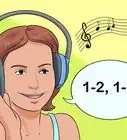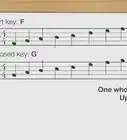This article was co-authored by wikiHow staff writer, Sophia Latorre. Sophia Latorre is a Content Manager on the wikiHow team. Before joining wikiHow, Sophia worked as a technical editor and was published in six International Energy Agency (IEA) Wind Annual Reports. Now, she writes, edits, and reviews articles for the wikiHow Content Team, working to make the content as helpful as possible for readers worldwide. Sophia holds a BA in English from Colorado State University.
This article has been viewed 35,587 times.
Learn more...
A conductor is the leader of a band, choir, or orchestra and helps keep the singers or musicians on tempo. To become a conductor, you must have rhythm and an existing understanding of music. Then, you can learn basic conducting shapes and forms. From there, you can develop your individual style and learn different patterns for more complex pieces of music.
Steps
Establishing Your Conducting Space and Movements
-
1Visualize a box in front of you to define your conducting space. Defining your conducting space will help you stay on beat and will make it easier for musicians to follow you. Imagine that the conducting box starts at the top of your head, goes out to each side about 6 in (15 cm), and stops at your waist. As you conduct, visualize the box and stay within its boundaries.[1]
- When first starting off, keep your hands inside of the conducting space.
-
2Hold your hands or baton in front of you to set the focal point. You can conduct music with your hands or a baton depending on your preference. The focal point is where your baton or hands will rest when there is no music. It’s also the area where your baton or hands will return at the end of each beat. The focal point should be about 6 inches (15 cm) directly in front of you at chest level. Slightly bend your elbows at your sides and hold both hands at your chest to set your focal point.[2]
- As you gain more conducting experience, you can change the focal point to anywhere within your conducting box. As long as you are hitting the focal point on each beat, the band should be able to interpret that and play on tempo.[3]
Advertisement -
3Move your arm from the elbow rather than the shoulder for fast music. If you are conducting high-tempo music, it may be easier to move your arm at the elbow rather than at the shoulder. This will allow you to make quick, swift motions rather than full, sweeping motions. Practice the basic conducting shapes at this different speed to see how it feels.[4]
- Practice and perfect moving your arm at the shoulder before trying this more advanced style.
Indicating the Beat
-
1Start with your hands or baton at the focal point. Place your baton or hands at the focal point, or the area where your hands will rest. This will cue the band, choir, or orchestra that the music is about to begin.[5]
- If you need to get the band or choir's attention, tap on the music stand.
- If you’re using a baton, hold it in your dominant hand.
-
2Bring your baton or hands to the top of your conducting box before the first note. Move your arms from the shoulder and bring your baton or hands straight up to the top of the conducting box before the beat plays. This is a basic action you’ll use leading up to the first beat in every measure.[6]
- You may want to leave one hand free if you’re following along with the sheet music so that you can easily turn the page.
-
3Move your baton or hand to the focal point on the first beat. Smoothly bring your baton or hands from the top of the conducting box and land on the focal point just as the first beat hits. Practice getting this basic motion down since it's a critical movement in conducting.[7]
- Put a slight bend and snap in your wrist to emphasize each beat.
-
4Sweep your baton or hands down and to the side on the second beat. If you're using a baton, sweep it down to one side of the conducting space when the second beat hits. If you're using your hands, bring them both down and out to the sides of the conducting space on the second beat.
- Make sure not to cross your hands—they should mirror each other instead.
-
5Move your baton or hands to the focal point on the third beat. Bring your baton or hands back up to the focal point from the edges of the conducting space in a smooth motion. Make sure to move your baton or hands with the music so that you hit the focal point on the third beat.[8]
-
6Bring your hands or baton down to the edges of the conducting space on the fourth beat. Continue to follow the pattern so that you hit the focal point on the odd beats (1 and 3) and move your hands or baton to the edge of the conducting space on the even beats (2 and 4).
- The entire shape should look something like a cross if you're using both hands.
-
7Repeat the pattern. To complete a 4/4 measure, for instance, you'll start with your hands or baton at the top of the conducting space, bring them to the focal point on the first beat, sweep them down to the sides of the second beat, hit the focal point on the third beat, then bring them back down to the sides on the fourth beat. Aim to use a fluid, sweeping motion that matches the music.
-
8Vary the conducting shape for different songs. The time signature for many songs is 4/4 (common time) or 2/4 (cut time), but you may encounter songs with other time signatures. The time signature indicates how many beats are in each measure. Practice conducting songs in different time signatures until you find a natural pattern for your hands to follow.
Conducting Cues and Tempo Changes
-
1Point toward a certain section to cue them in. A conductor can also cue in certain sections of the orchestra or choir during the piece. Look and point toward the section a beat or 2 before their part is coming up. Then, slowly raise your hands or baton on the first beat of their part. This will help them enter the song on the right beat and keep the entire group sounding cohesive.
- It’s important to do this when a certain section of the band or choir, such as the trumpets or bass section, are entering or reentering the song or piece.
-
2Cut off a section by moving your baton or hands in a straight, horizontal line. If there is a part of the song where one section of the band needs to stop playing immediately, you can cut off the section. Look at the section you want to cut off and move your baton from one side of the conducting space to the other exactly on the beat they are supposed to stop. If you're using your hands, start with them together at the focal point and bring them apart to each side of the conducting space. This will help them stop playing together and will keep the song sounding crisp.
- This movement should be quick and stiff to signify that it's a cut off rather than a beat.
-
3Match your movements to the tempo of the song. Remember to hit the focal point on odd beats and the edges of the conducting space on even beats. If the tempo is fast, you'll need to move your hands or baton quickly in order to hit each beat. If the tempo is slow, you can use more languid movements. Remember that your goal is to keep everyone on the beat, so you must pay close attention to the time signature and tempo!
-
4Develop your own style as you get more experience. Some conductors are swift and precise, staying within their conducting box throughout the entirety of the performance. Other conductors are emotional and use wide, dramatic movements to really energize their band or choir. Watch different famous conductors and take note of their style. Try to develop one that’s inspired by someone while injecting some of your own personality into the conducting.[9]
- Famous conductors include Gustavo Dudamel, Nadia Boulanger, and Lorin Maazel.
Community Q&A
-
QuestionHow do I end the song?
 Community AnswerYou would make a circular gesture, and at the end of the circle, you clench your hands and wait for the ensemble to stop.
Community AnswerYou would make a circular gesture, and at the end of the circle, you clench your hands and wait for the ensemble to stop.
References
- ↑ https://youtu.be/R6gnoTZ0xJ4?t=24
- ↑ https://method-behind-the-music.com/conducting/basic/
- ↑ https://method-behind-the-music.com/conducting/advanced/
- ↑ https://method-behind-the-music.com/conducting/advanced/
- ↑ https://method-behind-the-music.com/conducting/advanced/
- ↑ https://method-behind-the-music.com/conducting/basic/
- ↑ https://method-behind-the-music.com/conducting/basic/
- ↑ https://youtu.be/DdvHUJ88tao?t=86
- ↑ https://youtu.be/RrzxldFAivU?t=23

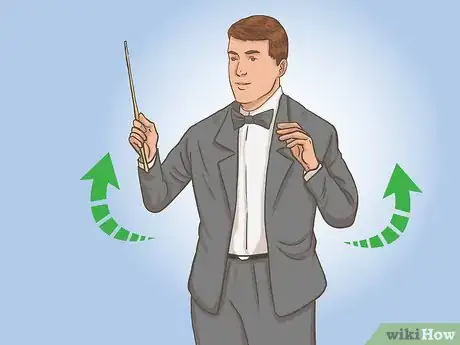
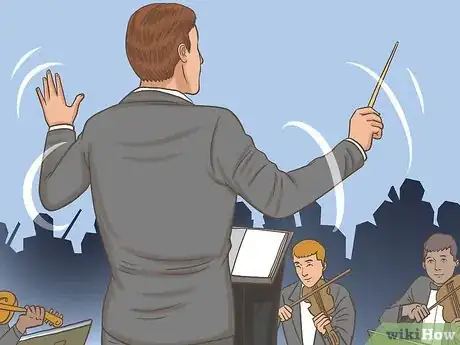
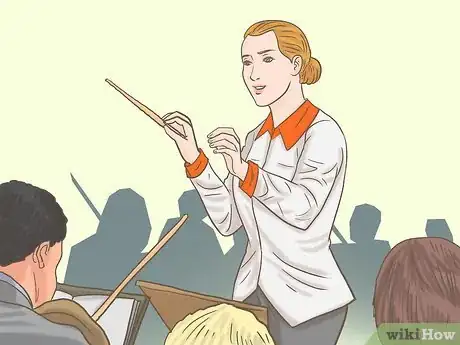
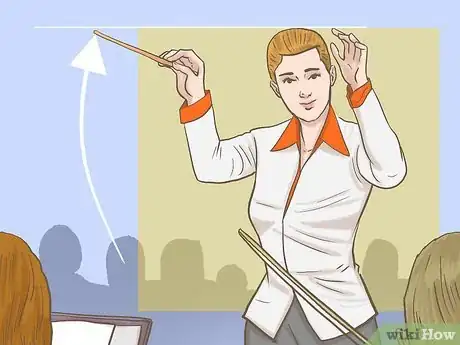
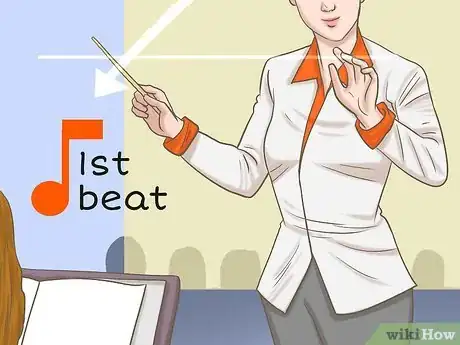
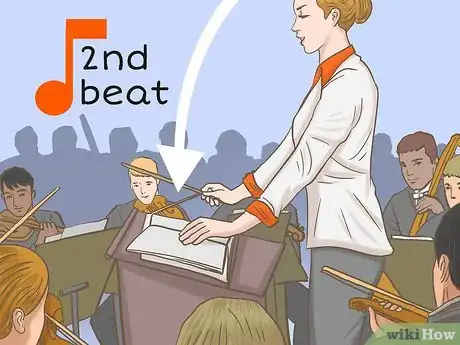
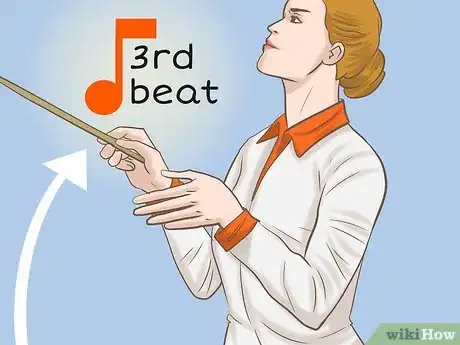
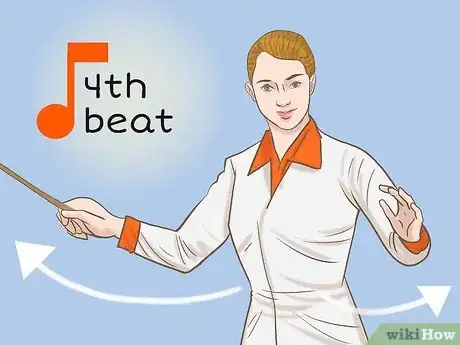
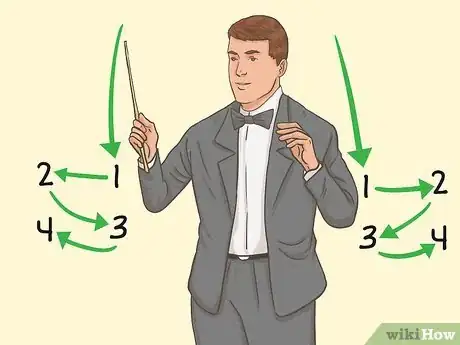
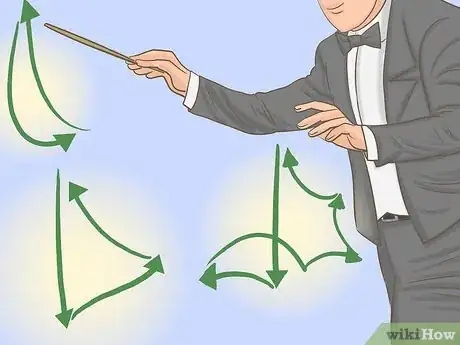
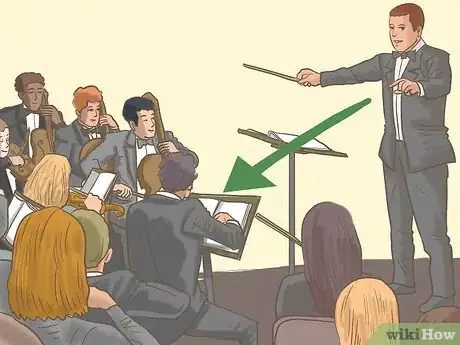

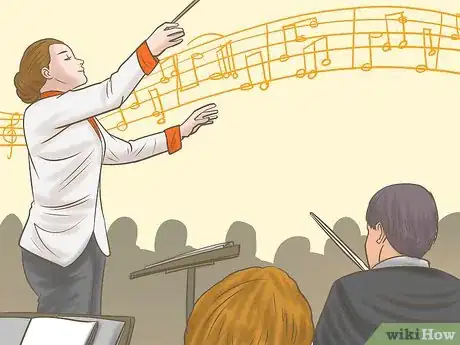
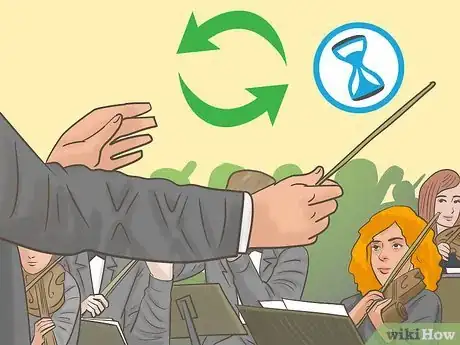
-of-a-Song-Step-9.webp)


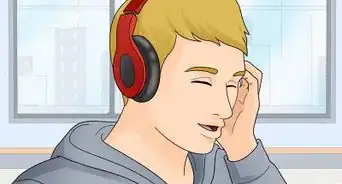







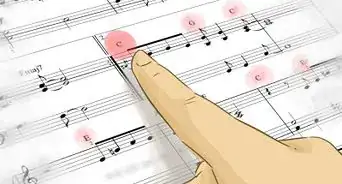









-of-a-Song-Step-9.webp)
